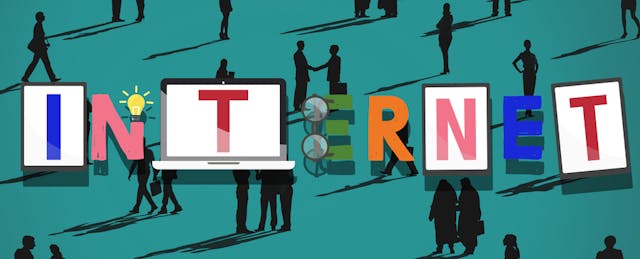How many of you have NOT used technology today? Or the Internet?
Those are questions I often ask in my presentation. It doesn’t matter how many people are in the room or what day or time of day it is, usually no one raises his or her hand.
But even among people who, technically, have Internet access, digital inequities exist. They’re hidden and hard to find—until now. A recent report (PDF) from the Joan Ganz Cooney Center reveals while nine out of ten families living in poverty are connected to the Internet in some way, many of those families are “underconnected.”
For example, 33 percent of families below the poverty line rely on mobile only Internet access. Out of those families, 29 percent say they have hit their data limits on their plan in the past year and 24 percent say their service has been cut off in the past year. One in five say too many people share the same phone and cannot get done what they need to get done.
The report is a powerful insight on how families living in poverty deal with access to technology and the Internet. The goal the researchers had was “to shine a spotlight on an important segment of the US population that too often goes unnoticed as we celebrate the progress and promise afforded by new technologies.”
I admit I am guilty of this myself. While there are many technological advances that we can celebrate, we cannot assume that these benefits are evenly distributed—or even equally accessible. Digital inequity is no longer a topic we can ignore. It has a direct impact and amplifies economic and educational inequities. If we aim to end social inequity, we must tackle its digital roots.
Education disrupts poverty, and technology can help enable, enhance, and support the great education our students need. If we are ignoring those students and families who need Internet access the most, we are failing in our education and community policies.
Access to technology and the Internet are no longer a “nice to have” feature in our lives. These elements are essential. Besides the typical day-to-day activities you can accomplish with access, such as looking for a job, comparing and shopping for the best prices on the things you need, and communicating and staying connected with families and friends, access to information equals having access to education.
Information gives us power. Power to research the nutritional value of the foods we eat. Power to question and vet those who want to represent us in government. Power to learn and pick up new knowledge, skills, and abilities. When we deny technology and the Internet to our families who need this access the most, we are denying them power.
The report is a powerful insight on how families living in poverty deal with access to technology and the Internet. Can you imagine what your life would be like if you didn’t have access to technology and the Internet? What if all you had was a 3G mobile phone—or a dial-up connection ?
Shining a light on this issue, as this report has done, helps us frame what we need to do to solve this problem. The good news is most families in this report see the value of technology and the Internet. They have a positive view on how this access gives their children a tremendous advantage. We don’t need to convince them. What we need to do is this:
First, we need to give them real—wireless—access. Many of the “special” programs available to low-income households only provide a wired, Ethernet connection. This limits the effectiveness of access if there are several family members who have to use the Internet. The services have to include wireless solutions.
Second, solutions must not have strings attached. Low-cost solutions often come with some limiting restrictions. For example, some require that the household not have had Internet access for six months. That’s an entire school year, putting many students further behind.
Third, we need more programs and more funding. While we have made some progress, much more can be done. For example, the Federal Communications Commission can continue to bring its Internet access programs up-to-date to reflect that Internet access is a basic necessity in today’s age. Restrictions have to be minimal. We must have more programs that train families how to take advantage of the Internet. And these have to be as low cost as possible so families aren’t picking access over other basic necessities.
We need to put the power of technology and the Internet in their hands. We all win when we do this.
For most of history, the closer you were to information and books, the more likely you were to have a good education. Today we have all the world’s information at our fingertips, but families who do not have that access are in danger of being left even further behind. While having any technology or Internet access is better than not having any at all, those who have mobile only or very limited access are at an extreme disadvantage—and we cannot accept this status quo.


